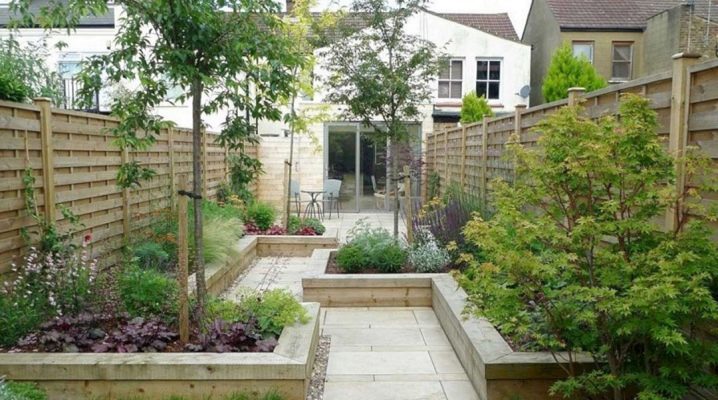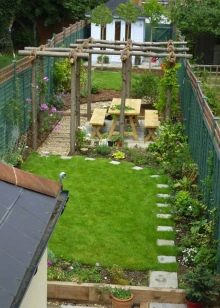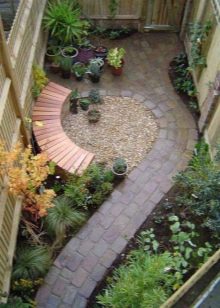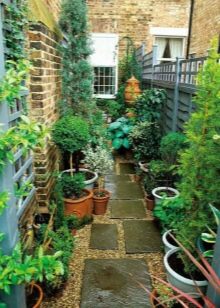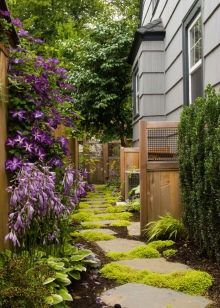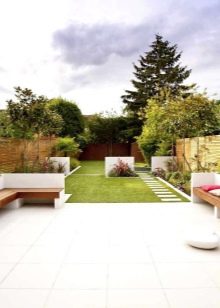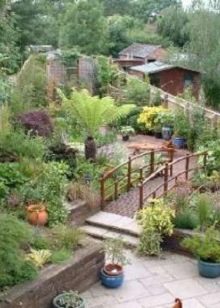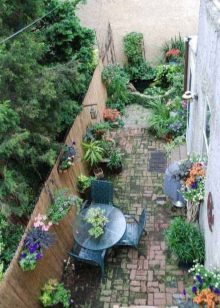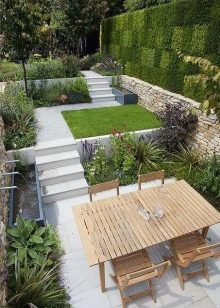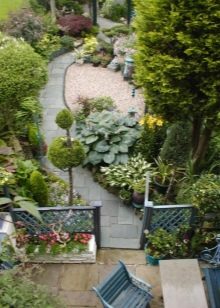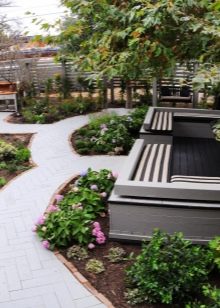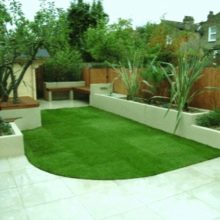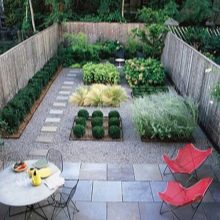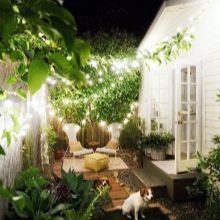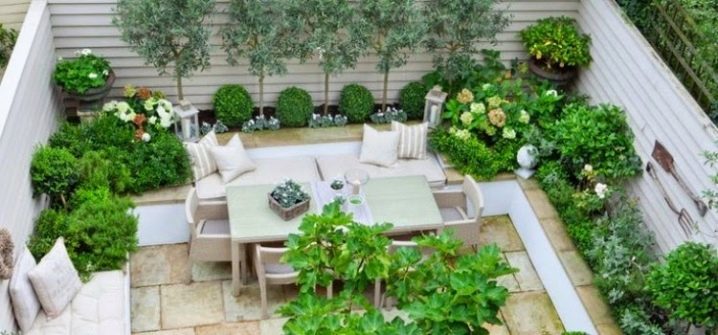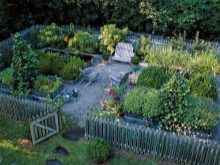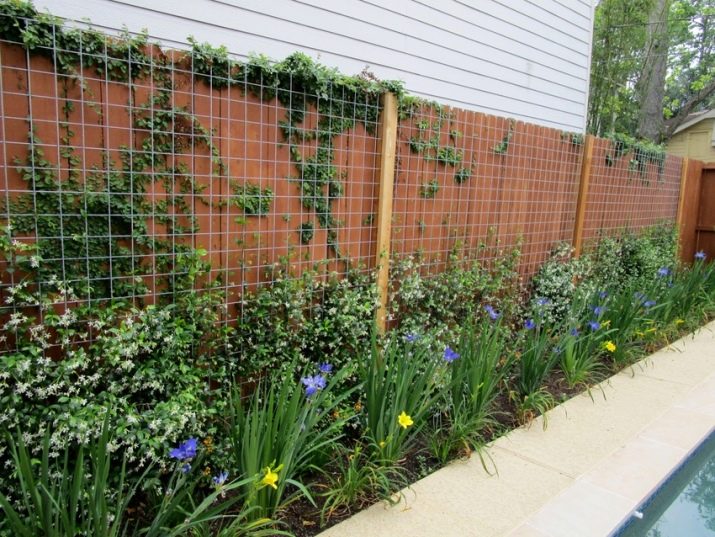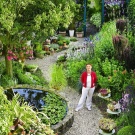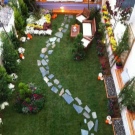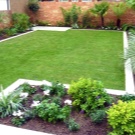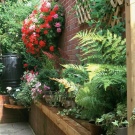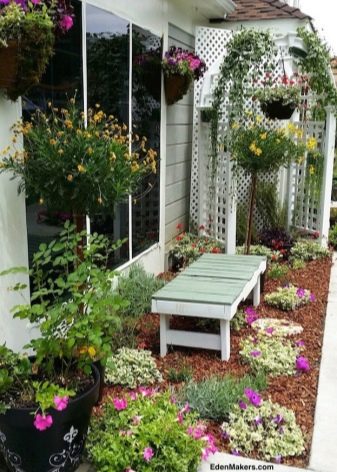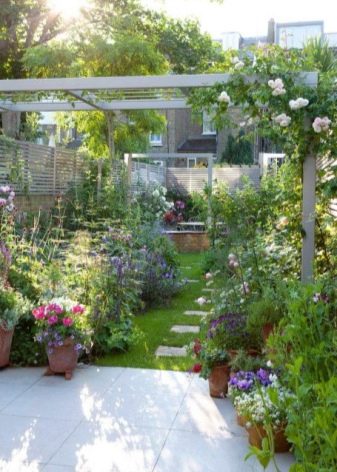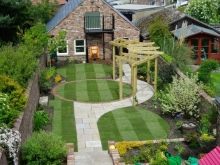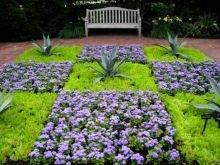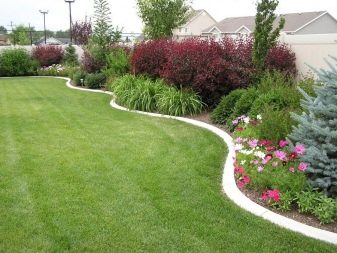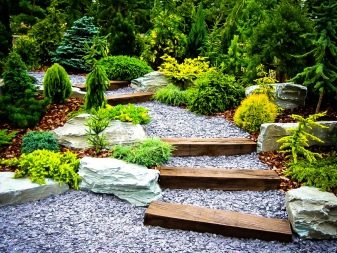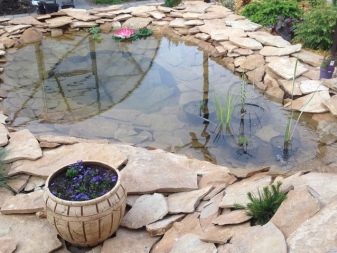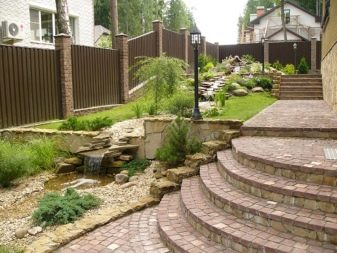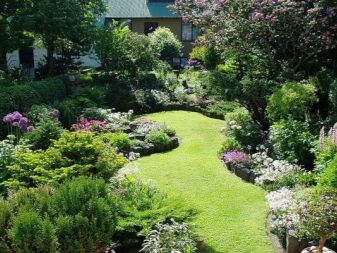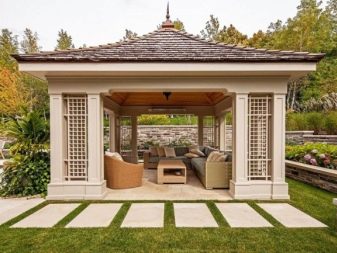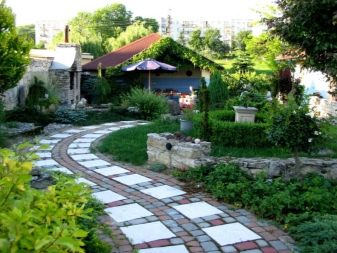Features of landscape design narrow area
Acquisition and further decoration of a plot with a house is a joyful, but at the same time troublesome event, especially if the plot is of non-standard size, for example, long and narrow. Well-designed landscape design will help to visually correct the flaws and emphasize the advantages of such an unusual area.
Correction techniques
Arrangement of a long and narrow section is not a super complex task.
It is only necessary to know the basic techniques of visual expansion of the boundaries and not to make typical mistakes.
These errors include:
- The presence of tall trees along the fence. This leads to the effect of the alley in the park and does not decorate the site;
- During the arrangement of the site is not involved the entire area. Usually,the most distant corners and areas remain without attention and care. While in these places you can place objects and vegetation to visually expand the boundaries;
- Creating straight tracks, beds along fences. This arrangement further extends the area.
Using the basic methods of correction, you can create a site with a visually correct shape:
- Zoning;
- Visual approach of distant borders;
- Multilevel design.
Space zoning is the easiest and most affordable way to correct. To do this, it is necessary to divide the entire area of the site into several zones and designate their boundaries with the help of such means as hedges, different pavements and paths with trails.
It is worth remembering that all separation goes across the fence. Deaf borders in the form of concrete walls or high fences are not used. Low-growing shrubs or flowers, hedges from climbers, as well as flower beds will look unusual in the form of separators. Multilevel fences in the form of borders, brick or woven low fences, steps, podiums of concrete are considered a good technique.
Different coverage will help not only to visually expand the site, but also to plant different types of plants.
The most popular combination is lawn and gravel or pebbles. Still used tiles, bricks, sometimes concrete for tracks. At the same time, zones may not have clear boundaries, but flow smoothly from one area to another. So, a gravel path can be traced on a lawn, and an alpine slide or a “piece” of landscaping in the form of a lawn can be located on a plot of pebbles.
Tracks or small trails can also be laid out throughout the site. It is desirable that they are curly, contrasting in colors or material.
In order to visually reduce the length of the section and give it a square shape, you need to use the methods of convergence of distant objects. If a tall tree grows at the end of the plot, then the best option would be to plant the same tree opposite it, but a smaller one. As for trees and bushes, it is better to give their crowns rounded shapes.
In order for the plot not to appear so long, it is worthwhile to install farm buildings, gazebos and sheds in the far zone. Pergolas, pergolas are best surrounded by flowers or undersized shrubs. Instead, you can still install alpine slide, fountain, high flower beds.The presence of many sculptures, architectural small forms, arranged in a chaotic manner, also reduce the length of the site.
Multi-level arrangement of the site is one of the correct and simple ways. For this you need to have objects, shrubs, flowers at different heights. Thus, the design of the rear site with tall trees, and the foreground in small bushes will create the impression of an extended area. For the same purpose, you can use vegetation with pergolas in remote areas. In addition, you can use flower beds located at different levels, fountains or higher buildings and gazebos at the end of the site.
At registration of the territory it is possible to use not only professional receptions of landscape designers, but also to take into account the color specificity of plants.
Color design
Creating a landscape in a long area, special attention should be paid to color design, since it plays an important role in the visual correction of the terrain. It is worth remembering that both shrubs and flowers are better to choose low. Exceptions are climbing plants for framing the perimeter or arbors.Most of the plantings are better to give a bright or bright flowers (geranium, carnation, rose, tulip). You can focus on the contrast in color subject. This can be a bright or bright red flowerbed on a green lawn or a “bushy” shrub in the center of the pebble zone.
Bright flowers are best used at the end of the plot., as they visually reduce the length of the terrain. Flowers and vegetation calm, light shades can be used to design the near zone. For this purpose, the vegetation of blue, white, pink shades is most suitable. Such a contrast will expand the boundaries and create a harmonious atmosphere.
A special view will give the territory plantation of coniferous shrubs or a pair of trees. Bushes can be placed along the fence or make them a hedge for zoning the site. Trees are better placed in different corners of the site, if they are the same height. Particular attention should be paid to the main track. It should be narrow at the beginning and expanding as you go. It is better to choose contrasting material for the alley (if the lawn prevails, then the path should be laid out of gravel or rubble).Along the main avenue, you can arrange low garden lamps with round shades.
A good solution would be to create flowerbeds with flowers of different colors in a checkerboard pattern. This technique will not only adjust the area, but also give it an original look.
Recommendations
When arranging a site that is so unusual in shape, you need to know a few rules:
-
When making a design, you should try to avoid straight, longitudinal lines, regular geometric shapes. It is better to give preference to winding lines and shapes without corners;
-
Making a plot or path of stone, pebbles, you can use a contrast approach. To do this, you can lay out an ornament of a different color or texture of the material or use a gradient;
- When zoning should give close to the site for sports or playground. You can also arrange decorative, or, if the terrain allows, a swimming pond. It is better to make it round, oval or unusual shape. The same forms should be used to design the beds, flower beds and zones of the site;
-
The fence must be made multi-level, since the monotonous fence will further stretch the shape in length.When creating a fence, you can combine materials. For example, a wooden fence can be supplemented with climbing plants or alternate with shrubs;
-
For the correction of the site, you can use the beds and mixborders, which will be located along the tracks or the main alley on the site;
-
Vegetable beds, flower beds are best positioned across the fence. This will help visually adjust the territory;
- When building a house or outbuildings, gazebos, special attention should be paid to their shape and location. Considered the most harmonious rectangular shape. At the same time in a small area the building can be located along the entire site. As for the house, it can be built and car-type, and in the form of a two-story building. Possible option of a small house with an extension in the form of a loft, summer house and a large basement.
-
Not only vegetation, but also buildings, paths, fountains, sculptures should be subjected to the correct color design.
Harmoniously shaped in color and form of construction, plantings will help to turn a long section into a convenient and comfortable place to rest.
Tips for planning a narrow area, see the following video
